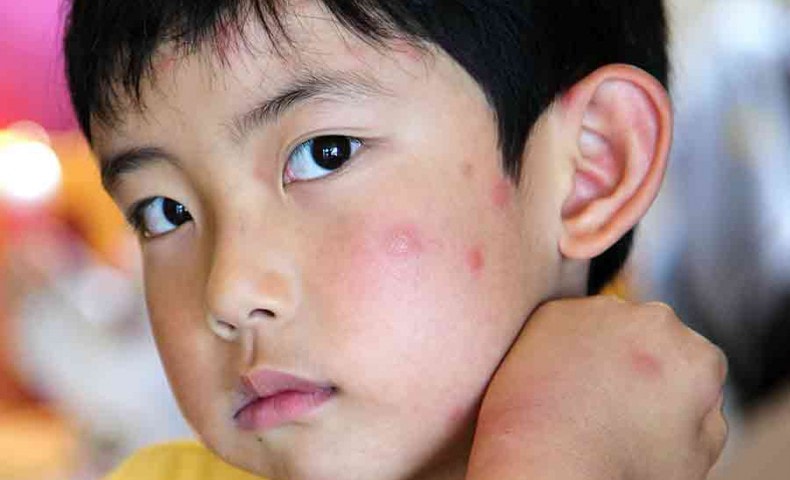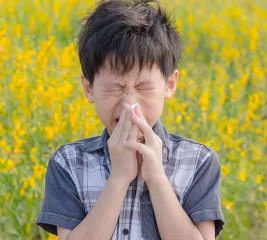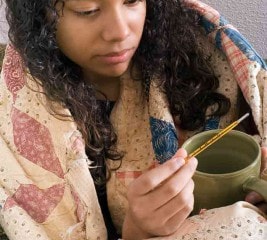
Some of the most enjoyable outdoor summer pastimes can be tainted by possible irritants like poison ivy, sunburn, sun poison, chiggers, and ticks to name a few. Swimming in lakes and oceans, hiking through woods, gardening and enjoying s’mores at a campfire are some of the things we love to do this time of year. So, be ready and understanding about what you can do if a red itch starts.
Poison Ivy
This rash that looks like clear fluids filled blisters, commonly in a linear array, is terribly itchy and uncomfortable. It can be located in one spot or it can be all over your body. Quite often people may not know they were exposed but once the rash begins, a few days (12-72 hours) after exposure, they will know! Typically it begins as red streaks that turn into blisters.
Prevention is the first line of defense, be aware of what it looks like and try not to touch it or brush up against it- I know that even when my dog walks through it, I can get it from her too!
If you come into contact with the plant, wash your skin and clothing to remove the oil. Even a dead poison ivy trail on a tree can contain the oil (Urushoil). This oil can cause an allergic response after it brushes against the skin.
If you do develop a rash despite your best preventative efforts, over the counter remedies are good places to start. Dr. Mia Finkelston, who treats patients using LiveHealth Online, recommends having these at home at all times for easy accessibility when you need it. Who wants to go to the store when they have a rash that is red and itches?
Try calamine lotion or oatmeal lotions, 1% hydrocortisone cream applies 2-3 times a day , and oral antihistamine like Certrizine (Zyrtec)or Diphenhydramine (Benadryl). Dr. Finkelston likes to make compresses with Domeboro solution (found in the first aid aisle). It can help to dry out the weepy blisters. If you know you are allergic to the ivy and you are going to be exposed then take an antihistamine ahead of time, it may help minimize a reaction should you get one.
Sometimes, the over the counter remedies are not enough, but how do you know? If there is poison all over your body, if it is on your face or in the sensitive areas of your body, then you will most commonly need oral steroids, at an appropriate dose, to get rid of the rash.
Do your best not to scratch!
Polymorphic Light Eruptions
This is another term for sun poisoning, which is an allergic reaction to the sun that causes a red, bumpy rash that is itchy. It does not produce blisters like poison ivy and it typically occurs on the chest, neck and forearms. It often comes out in people who have not seen the sunrays for a while. You can use over the counter remedies such as hydrocortisone cream and antihistamines.
Heat Rash
A heat rash is different from sun poisoning, which occurs on classic areas. The heat rash tends to occur in areas where the sweat glands are blocked and sweat is unable to come out of your skin. This can happen under a diaper, under heavy creams, in intense heat and if you are wearing thick clothing in the heat. It usually goes away on its own once the skin cools down and is unblocked. The rash can look like red patches, tiny blisters or bumps with pus inside. It is not always itchy.
Insect Bites
Annoying mosquitos, black flies, greenhead flies or whatever flying irritant lives near you, can leave a red mark or marks on your skin. Quite often these are itchy and get better in 2-3 days. A topical hydrocortisone cream or calamine lotion often does the trick and there are usually not any blisters.
Most natural insect repellants don’t last long so plan to reapply these frequently. DEET can safely be used in all ages, just adjust the amount you use with children, looking for formulas with no more than 10-30% concentration of DEET.
Spider Bites
Spider crawled into the tent?? Don’t panic. They don’t often bite. Black widow and brown recluse spiders are the only two spider species in North America whose bites may cause symptoms more serious than minor pain and swelling. Typically a spider bite appears as one large bump that is not itchy.
If you do get a spider bite, wash the area with soap and water, apply a cold compress if needed for any swelling. If it does not improve, be sure to see a doctor as soon as possible. You can see a doctor using LiveHealth Online 24/7.
If you or your child encounters a rash or bite that you’re concerned about, you can speak to a doctor 24/7 using LiveHealth Online.
Comments and opinions from Dr. Mia Finkelston are hers alone. This is content from an interview and is not considered medical treatment.
Recommended Posts


